Business Process Management | Ultimate Guide
Business process management is the cornerstone of any successful organization. From early-stage startups to massive enterprises, BPM is the key to efficient, robust, and consistent operations.
However, process management is also widely misunderstood.
Part of the problem here is that BPM is so ubiquitous. In fact, it touches on just about every aspect of your business, including ops, IT, HR, finances, marketing, sales, legal, and much, much more.
Because of this, there’s a huge market for products that want to bill themselves as one-stop-shop BPM platforms. In reality, though, business process management is so much more than a single class of software.
It begins with an approach to operations that focuses on efficiency, repeatability, consistency, and control across all regular activities within your business. As we’ll see, there are numerous tools, techniques, and methodologies available to us here.
Today, we’re diving deep into everything you need to know.
We’ll start with the theory behind when and why businesses turn to BPM. Then, we’ll move on to the more practical side of things, including the specific tools, strategies, and steps you can leverage to implement effective process management.
We’ll also see some examples of how modern businesses are succeeding with new technologies.
But first, we need to cover the basics.
What is business process management?
Let’s start with a formal definition. Business process management means taking a systematic approach to designing, modeling, executing, and optimizing business processes.
In other words, the goal is to create, implement, and continuously improve processes to ensure that regular tasks within your business are as streamlined and robust as they can be. You can use any tools at your disposal to this end.
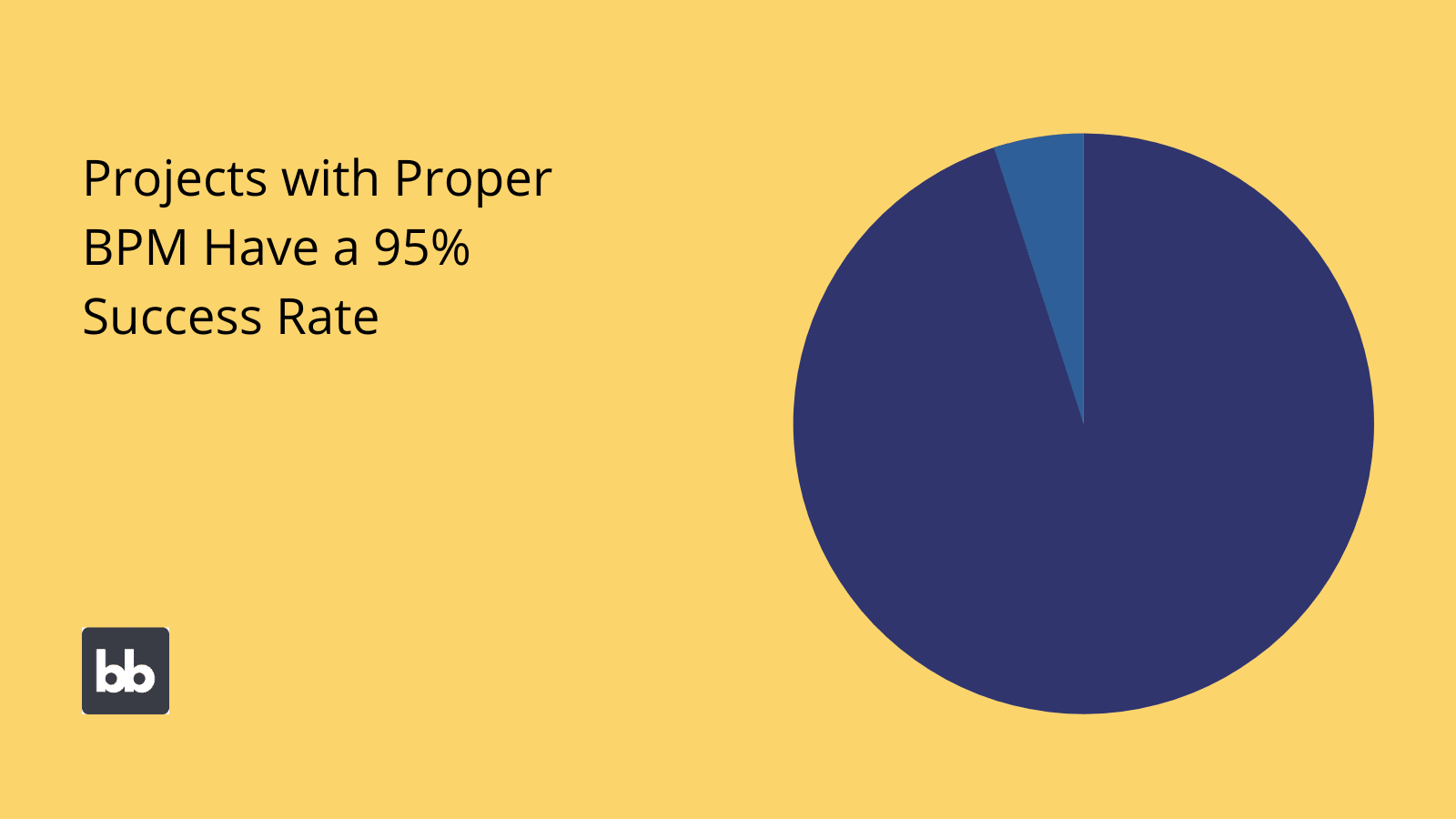
For instance, BPM is closely associated with automation, but it also pulls on a range of governance, operational, and software tools. We’ll return to each of these later.
But for now, it’s worth taking a step back.
What is a business process?
To properly understand BPM, we need to have a clear idea of what a business process actually is. When we talk about processes, we mean any set of actions and tasks that are carried out in a consistent manner, on a regular basis.
At least, they should be carried out consistently.
In practice, things aren’t quite so simple.
For one thing, the majority of processes involve human actors. This introduces the possibility of non-compliance, human errors, and other inconsistencies. One goal of BPM is to seek to eliminate these.
Processes should also be fixed and documented. So, the idea is that there’s an established way of doing things that’s usually defined from the top down.
In other words, a business process is a set flow of actions and events that’s used to ensure consistent results for a given set of inputs, regardless of which colleagues or other actors are involved.
To better understand this, we can look at some examples of process management in action.
Use cases for BPM
We’ve said already that BPM can and will touch on just about every vertical within your business. This is pretty vague, so some concrete examples will be helpful.
Let’s take a look at some key use cases across different departments and teams.
Finance
Finance processes are largely concerned with the flow of information and resources, with the goal of maximizing speed, accuracy, and accountability. One key approach here is minimizing the need for human discretion.
A great example is employee expense submissions and approvals. So, we’d use BPM to establish better control over the kinds of purchases that are expensable, how these are submitted and reviewed, the conditions for approval, and any extra oversight we need.
IT
IT processes are somewhat more varied. This includes everything from software development to device management, infrastructure monitoring, and incident responses. In each case, our goal is to ensure that resources are accounted for and available for the teams that need them.
So, you might have defined processes for different kinds of incidents. For instance, a flow of recovery, information gathering, and security actions that must be carried out in response to a data breach.
Check out our ultimate guide to traditional SDLC vs RAD .
Human resources
HR teams are particularly bound by processes in their daily work. After all, they’re the ones responsible for making sure everyone else follows the rules, and HR is notorious for paperwork and admin.
The classic example is employee onboarding. When a new colleague joins, we want them to get up to speed as fast as possible, across both role-specific and organizational issues. Providing streamlined, repeatable onboarding processes is vital for doing this at scale.
Sales & marketing
On the commercial side of your business, defining processes is trickier, but no less important. The key driver here is the need to expedite purchasing decisions and maximize lifetime customer values while minimizing the internal resources incurred to do so.
Lead qualification processes are a great example. So, you could use a combination of behavior data, automation, and playbooks to ensure that our sales team gets the right messages in front of customers, at the right time.
Operations
Operations teams are responsible for shoring up efficiency across your entire business. The specifics of this depend greatly on your industry. BPM is particularly important here, as ops colleagues are typically the ones who define processes in the first place.
The ops department is also responsible for managing facilities, including specific processes surrounding repairs, maintenance, and even procurement. Like with IT, the goal is to ensure that other colleagues have the resources they need to do their jobs effectively and safely.
Why is business process management important?
Now that we’ve seen some specific examples of where business process management comes into play, we can begin to think about why it’s such a priority. One way of thinking about this is that essentially everything your employees do can be framed as a process.
So, BPM offers us a pathway to improving efficiency, accountability, and consistency across all business activities.
Let’s take a look at some of the more granular benefits that we can use BPM to achieve.
Streamlining processes
One of BPM’s core principles is that each constituent part of a given process must provide value. Otherwise, it should be eliminated. With what remains, the goal is then to remove any extraneous labor, ambiguity, or other blockages.
The end result is highly streamlined processes.
There are a couple of different ways that this can be achieved, including reducing the number and complexity of manual interactions required of colleagues, as well as providing clear expectations for those that remain.
We’ll see how this plays out in more detail as we discuss the remaining benefits of business process management.
Check out our free guide to IT process automation .
Reducing costs
One very obvious benefit of reducing the need for manual admin work is a corresponding reduction in labor costs.
Depending on the extent of your transformation, this could mean cutting the time required to complete a task or even eliminating the need for certain employees to participate in it at all. Your resources can then be diverted to more profitable activities.
Besides this, we can also expect to see savings on indirect costs, including those associated with poor customer interactions, excessive delays, the scope for errors, and employee dissatisfaction.
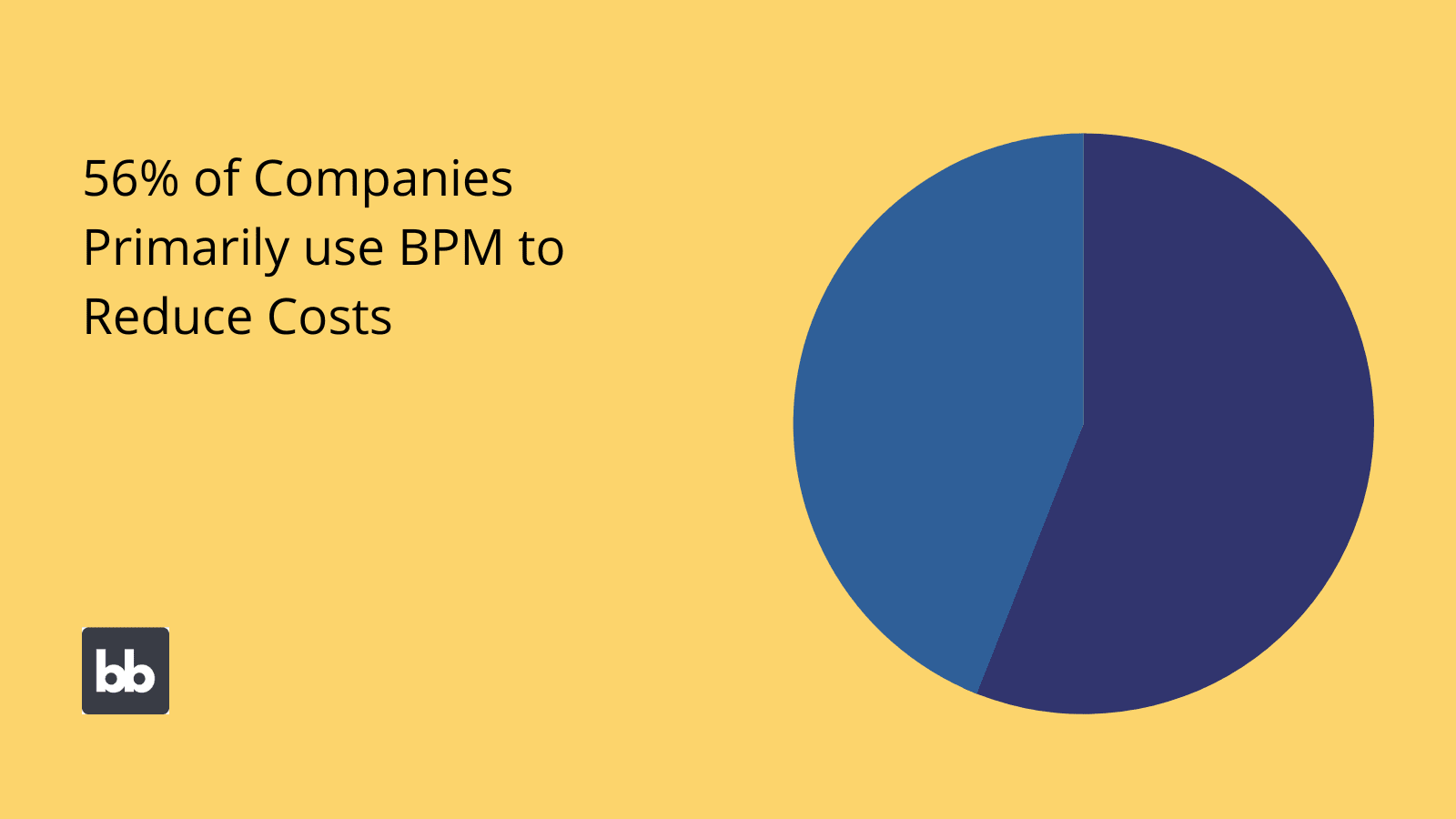
(BP Trends)
Minimizing risks
Business process management is a central plank of how you plan for, mitigate, and respond to risks and threats. This can include everything from highly specific, contextual factors to more general issues.
As we systematize different business processes, we also reduce the possibility of things going wrong - including both adherence issues and inaccuracies.
We also create a situation where it’s easier to respond when something does go wrong since we have a clear framework to compare real-life events against. So, even where individual risks still exist, their potential impact is greatly reduced.
Increasing productivity
One of the top reasons that business turn to BPM is to boost productivity across their organization.
This can actually work in two separate, but related ways:
- Rediverting resources away from menial tasks and toward more productive ones.
- Empowering employees to complete tasks faster and with fewer resources.
In addition to the impact on labor costs that we’ve already seen, this has a huge effect on project turnarounds, employee satisfaction, and customer relationships. So, say we used BPM to streamline our customer complaints and escalation processes.
With fewer menial admin tasks, employees can focus on the more rewarding aspects of solving customer problems, while the customer themself is more likely to receive a speedy and satisfactory resolution.
Creating accountability
Business process management is also focused on creating accountability across your organization. In the first instance, this involves delineating clear responsibilities for individual tasks and decisions.
Besides this, digitalization allows us to achieve robust paper trails of user actions. This is invaluable for determining how and where things have gone wrong and putting measures in place to prevent the same issues from reoccurring.
Similarly, BPM has a role to play in providing clear guidance on how employees should respond in different situations, especially where it’s necessary to report or escalate different issues.
Improving compliance
Finally, business process management is central to your wider compliance efforts. In fact, BPM and compliance are deeply intertwined disciplines. This applies equally to cyber security, health and safety, and other legal and financial requirements.
The key here is implementing compliance by design. That is, BPM affords us the opportunity to build the requirements we need to comply with into our processes from day one.
Once we’ve modeled our ideal processes around these, the next step is to choose the most effective way to implement them in the real world, to minimize the incidence of compliance issues.
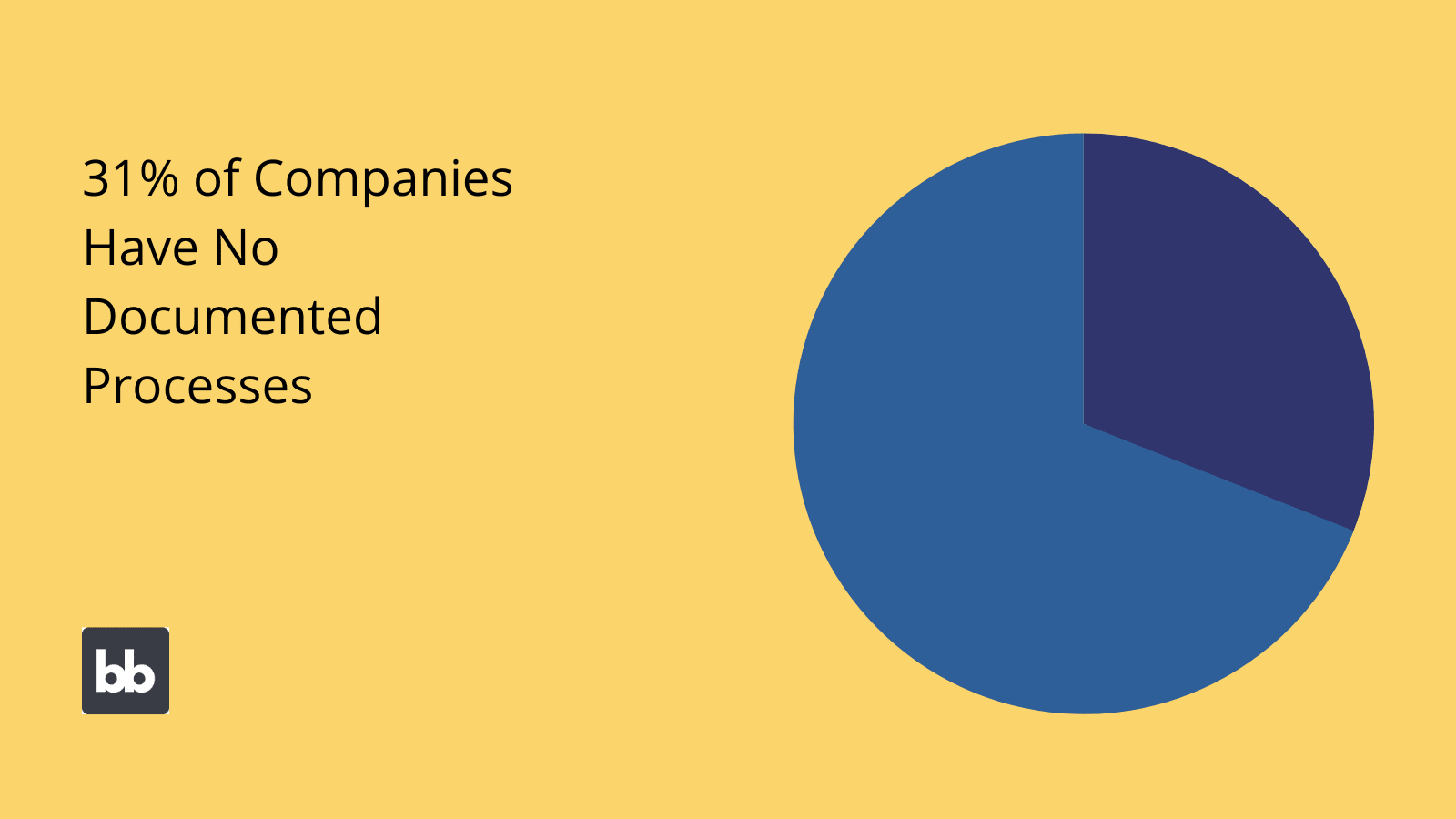
Key challenges for BPM
It’s also worth keeping in mind that, like any kind of transformation, business process management isn’t always plain sailing. Instead, there are almost innumerable issues out there that can undermine your efforts, or even block them entirely.
Here are some of the key challenges you’ll need to overcome to achieve effective business process management.
Stakeholder buy-in
Your first hurdle is almost invariably convincing decision-makers of the need for BPM. After all, implementing business process management can often represent a major organizational and culture change.
Stakeholders can have legitimate concerns about this, including surrounding the associated costs and potential for disruption. For example, if there’s a need for additional staff training or other resources to roll out new processes.
The key to overcoming this is presenting a clear business case for transformation.
So, when we can quantifiably present the benefits that we’ve already seen above, decision-makers are much more amenable to change.
Resourcing BPM
Related to this is the challenge of resourcing our BPM efforts. Specifically, we have three different types of resources to consider:
- Skills & expertise.
- Financial resources.
- Technical resources.
In other words, we need the right people with the right tools to implement BPM, along with the capital to pay for this.
The first point is the trickiest, but we have a few different options here. For example, delegating this to dedicated employees or empowering leaders within individual departments with BPM skills. We’ll see how this works when we discuss methodologies.
We’ll also dive deeper into the kinds of tools that BPM necessitates a little bit later.
Spillover
Spillover is when transformation in one area of your business exposes a need to transform others. For example, if you set about defining a new process for invoice submissions, only to realize this wouldn’t be effective unless you do the same with your accounts payable.
This can cause a few serious problems. On the one hand, it can lead to escalating costs. On the other, it can create unforeseen delays and blockages to transformation.
Some extent of spillover is almost inevitable. However, there are still steps that we can take to mitigate its impact. One is conducting a thorough analysis of our processes’ dependencies in the first place.
Another is minimizing the costs of BPM through the right choice of tools.
More on both points later.
Ongoing improvement and optimization
Finally, we have the reality that BPM isn’t exactly a set-and-forget kind of deal. Instead, it’s largely based on an acceptance of the need for ongoing, continuous improvement to existing processes.
This can stem from evolving business needs, new challenges, or simply oversights and inefficiencies in your initial process model or implementation.
Depending on the nature of the issue, you might need wholesale change or simple tweaks around the edges.
In any case, we need effective monitoring to identify a need for change in the first place and to decide on the specific actions we’ll take to meet this need.
3 approaches to BPM
So far, we’ve talked about business process transformation fairly monolithically. However, we should stress that this isn’t the whole story by any means. Instead, there are several - sometimes competing, sometimes complementary- approaches to BPM.
These vary both in terms of the specific types of processes they’re applied to and, to an extent, the techniques used to manage them.
Let’s take a look.
Human-centric BPM
First up, we have human-centric business process management. This focuses on people, above all else. The basic precept here is that we’re best able to achieve our desired ends when we accept that the majority of processes have humans at their center.
The goal here is not so much to replace human interaction, as it is to augment them, making employees’ and customers’ lives easier.
In other words, our goal is to employ digitalization in a way that facilitates human decision-making more expediently. Automation plays a huge role, as do dedicated, streamlined UIs, clear separation of responsibilities, and effective data access.
Unsurprisingly, human-centric BPM is ideally suited to use cases where interactions are complex, irregular, or situational. For example, in customer service, hiring, onboarding, employee discipline, sales, and other processes with an emphasis on soft skills.

McKinsey
Integration-centric BPM
Integration-centric BPM is more focused on maximizing efficiency between systems, often in situations where human interactions are already less important. The idea is essentially to get your existing tools and platforms working together smoothly.
Of course, this is heavily reliant on technology. First, we need APIs and other integration tools to pass data between platforms. Second, we’ll typically need to add additional layers of data processing to ensure compatibility. Third, we need to define automation rules between tools.
As such, integration-centric process management is more akin to traditional digital transformation. Often though, we’ll also add functionality for human interactions, like data entry, reading automation logs, or triggering manual overrides.
Examples include any situation where you need to build integrations between existing tools, including payment processing, reporting, monitoring, marketing, IT infrastructure, and resource management processes.
Document-centric BPM
Lastly, we have document-centric BPM. As the name suggests, this is all about streamlining the flow of documents between different teams, platforms, and other actors. This could mean contracts, marketing collateral, documentation, reports, papers, and more.
With any kind of document-centric process, we have a few key goals:
- Ensuring an efficient flow of documents between nodes.
- Maintaining oversight as documents progress through each stage.
- Streamlining requisite user actions.
- Providing users access to the documents they need.
The final point is crucial since document-centric processes are still highly reliant on human inputs.
As you might have guessed, use cases for document-centric BPM include contract management, content approvals, writing documentation, peer reviews, and any other paper-work-heavy processes.
Business process management methodologies
Separate from the three distinct approaches to business process management that we’ve just seen, we must also understand the specific methodologies that can be employed within each of them.
A methodology is a repeatable framework that you can apply to any process.
However, there’s a large amount of variance between different methodologies, across their priorities, units of analysis, core strategies, and requirements.
These are the dominant business process management methodologies.
DMEMO
DMEMO stands for design, model, execute, monitor, optimize. This is by far the most widely adopted business process management methodology. As you can probably tell, the idea is to break process management down into five discrete stages.
Here’s a brief description of what each one involves:
- Design - Setting out the specific steps required to complete a task.
- Model - Defining an ideal flow to carry out these steps.
- Execute - Implementing your model, both technologically and by governance.
- Monitor - Analyzing your progress towards your underlying goals for BPM.
- Optimize - Carrying out ongoing improvements.
Part of the reason for DMEMO’s ubiquity is that it reflects the fact that business requirements change constantly, while also offering a generic, use-agnostic approach that can be applied to all kinds of processes.
This is essentially an iterative approach, meaning that it can be implemented continuously as individual processes grow and evolve.
DMAIC
DMAIC is more focused on achieving stability and regularity in your processes. This isn’t to say that it eliminates the option to adapt as time goes on, but the greater emphasis is on the consistency of outputs.
The name is an acronym that stands for define, measure, analyze, improve, control.
Here’s what each stage involves:
- Define - Setting goals for what exactly needs to be improved within the process.
- Measure - Quantifying how the current process performs across relevant metrics.
- Analyze - Identifying the cause of any gaps between the current state of the process and your goals.
- Improve - Testing, validating, and implementing solutions to bridge these gaps.
- Control - Ensuring that implementation is successful and that no new issues occur.
There are several benefits to this approach. One is that DMAIC is highly focused on finding the most efficient way to deliver consistent outputs. This makes it particularly well suited to processes that require menial human interactions to be carried out at scale.
Similarly, more emphasis is placed on creating granular business-level goals for your BPM efforts. In turn, this makes it easier to quantify, measure, and achieve your desired impact.
Lean
Lean business process management takes a slightly zoomed-out approach. It’s more interested in broader organizational change. Specifically, the goal is to build a culture of continuous, incremental improvements to processes.
The main unit of analysis here is value - either for your business or for the customer.
Lean operates on three principles:
- Processes are best understood in terms of the value they’re intended to provide.
- Elements that don’t provide value should be eliminated.
- All remaining elements should be continuously improved to provide maximum value with minimal resources.
Another important point to note is that Lean takes more of a bottom-up approach than the other BPM methodologies we’ve seen so far. The idea is to create a sense of shared responsibility for how teams do things across your organization.
As such, it’s highly suited to situations where a large degree of on-the-ground understanding of the challenges your teams face is useful.
It’s worth noting that these methodologies aren’t entirely exclusive. In fact, it’s very common for businesses to combine them - either by selectively using different approaches as the situation demands or combining elements of each into a more bespoke methodology.
Additionally, each of these methodologies is essentially platform-neutral, meaning that the actual technologies and other interventions you use to improve processes are largely up to your specific goals.
What is a BPM lifecycle?
Another term you’ll often come across is the idea of BPM lifecycles, so it’s worth understanding what this means and how it relates to our discussion so far.
Basically, a BPM lifecycle is the structure your initiatives follow from ideation to becoming a reality.
As you might expect, this is really a function of the methodology that you opt for. So, for instance, if you employ the DMEMO methodology, your BPM lifecycle mostly comprises the five stages that we saw a minute ago.
But, we can also append a couple of extra elements onto this to make it a fully-fledged lifecycle.
These occur before and after the constituent steps of each of our methodologies.
Before we can even think about selecting a methodology, we need to identify a need for business process management. We then need to crystalize the strategic goals that we’re hoping to meet through BPM.
After the fact, it’s important to solidify any learnings that come from our endeavors. For instance, by analyzing our real-world results and the resources we needed to reach them, compared to our expectations.
We can then document and learn from any issues or unforeseen roadblocks that prevented us from meeting these expectations.
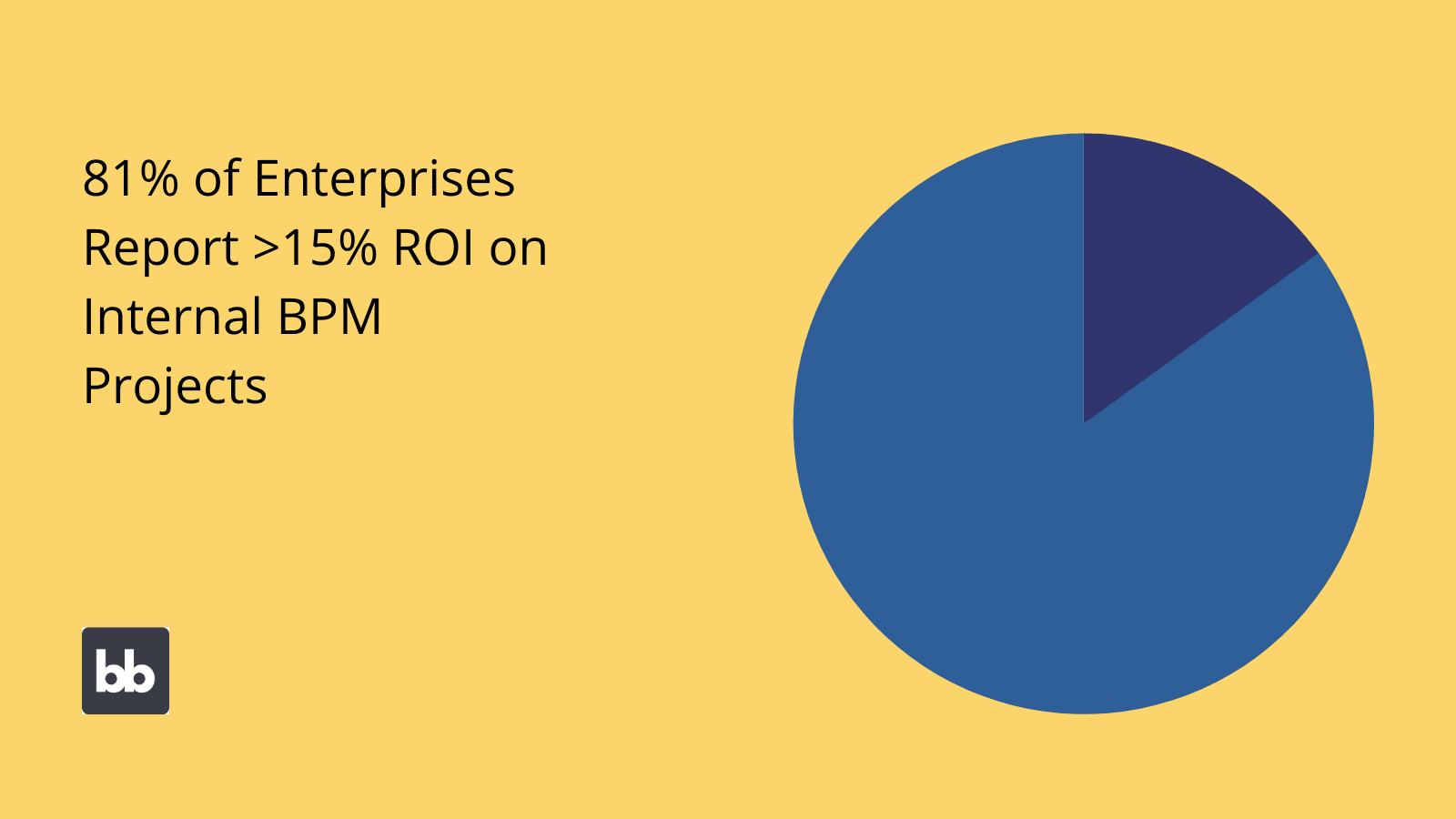
Business process management vs business process automation
The other major related idea you’re likely to encounter is business process automation (BPA). In fact, you’ll often see BPA and BPM used synonymously, but it’s very important that you understand the distinction.
As the name suggests, BPA is all about automating business processes.
Specifically, the idea is to use technology to replicate, augment, or replace human interactions. This can be done in a number of ways, from simple trigger/action pairs to more complex AI-based automation.
Take a look at our ultimate guide to business process automation for a more detailed discussion.
For now, the point is that this is not the same as business process management, although both disciplines share a common goal.
The best way to think about this is that BPA is just one of the tools that you have in your process management arsenal.
They can be distinguished by the fact that BPM also comprises non-technical issues, including the design, governance, and theory behind your processes, as well as any other interventions you use besides automation.
How to implement BPM in 6 steps
Next, we can move on to the more practical side of our discussion. Obviously, a huge part of this has to be fleshing out how you’d actually go about implementing business process management.
For the sake of argument, we’ll assume you’re starting from zero, having never previously considered BPM.
We’ve covered a lot of theory already, but the next step is understanding how this can be applied in specific situations.
As ever, we need a repeatable framework in order to be successful here.
So, here are the steps you can follow to effectively implement BPM.
1. Establish a need for change
First of all, we need to decide that there’s a need to turn to BPM in the first place. This means looking at the current state of our operations and figuring out what we stand to gain from transforming them.
We can actually do this at a few different levels.
So, we might think about this across the entire organization, within specific teams, or even with specific processes in mind. In any case, we need to establish whether or not there’s actually a problem.
The key here is analyzing how your current processes are performing, with regard to both inputs and outputs. We can also seek to identify specific pain points that you hope to resolve through BPM.
By the end of this stage, you should have a quantifiable view of the present state of your business processes.
2. Define goals and choose target processes
Next, we can start to define more specific goals and choose the processes that we want to target. The key here is figuring out where we’d like to be, with reference to where we are at the present moment.
As with any transformation initiative, it’s crucial to focus on specific, measurable, and achievable goals. For example, particular revenue, profit, accuracy, or time-bound targets that you want to meet with BPM.
Before we get any further into our BPM efforts, it’s also important to decide on specific processes that we’re going to focus on, at least initially. There are a few different ways that you can prioritize here.
So, you might opt for the processes where you expect to see the greatest impact from transformation.
Alternatively, you might focus on relatively simple processes or ones that are less central to your mission, to minimize risk while achieving proof of concept.
Both are valid options, and the right choice for any given organization is highly contextual. For instance, there could be an urgent need for change in a particular set of processes that’s led you to look into BPM in the first place.
3. Secure resources
Knowing exactly what we want to achieve, our next step is determining what resources we’ll need to reach our goals. We’ll then need to actually secure these resources.
Let’s start with the first part.
The key here is to use our expectations around how our interventions will affect costs and cash flow. Obviously, this determines how much we can afford to spend on BPM for it to be worthwhile.
Arguably the bigger challenge is securing resources. Part of the challenge here is that this requires us to convince stakeholders both that there’s a need for change and that enhanced business process management is the right way to meet this need.
Again, the important thing here is focusing on our predicted ROI. That way, we can effectively communicate the impetus behind our proposed interventions, as well as comparing their impact against alternative solutions.
4. Choose a BPM methodology
Next, we need to start planning the specific actions we’re going to take to meet our goals. First of all, this means choosing the right methodology for our needs. Remember, that there are a few commonly used approaches here.
One of the first decision points we’ll come up against is whether we want to implement BPM as a discrete transformation project or as a wider cultural shift.
Of course, we’ll also want to think about the initial target processes that we identified a few moments ago. That way, we can take account of established best practices around various use cases, as well as our more specific situation and requirements.
When choosing a methodology it’s also vital to keep in mind that we’re also inevitably going to be influenced by the resources that we have available to us to enact transformations.
This includes the required skills and knowledge, as well as specific tools, labor costs, and the finances to cover them.
It’s also worth restating that each of the methodologies that we looked at earlier can be combined or modified, to create a framework that more closely aligns with your specific goals and requirements.
5. Implementation
As you might expect, once we know what we want to achieve, the processes we’re going to focus on, and the methodology we’re going to use, it’s time to get to work.
Luckily, the whole point of working within a defined methodology in the first place is that it provides us with a clear set of steps to follow in order to implement business process management.
So, we really just need to follow the framework that’s provided for us.
Of course, in practice, nothing is ever actually this simple. Indeed, we’ll need to be adaptive to unexpected issues, delays, and roadblocks. Of course, the best cure is always prevention. Nonetheless, it’s important to have a firm grasp of key mitigation strategies.
For example, in any BPM methodology, it’s vital to thoroughly analyze and document individual processes’ dependencies in order to plan around and avoid unforeseen spillover.
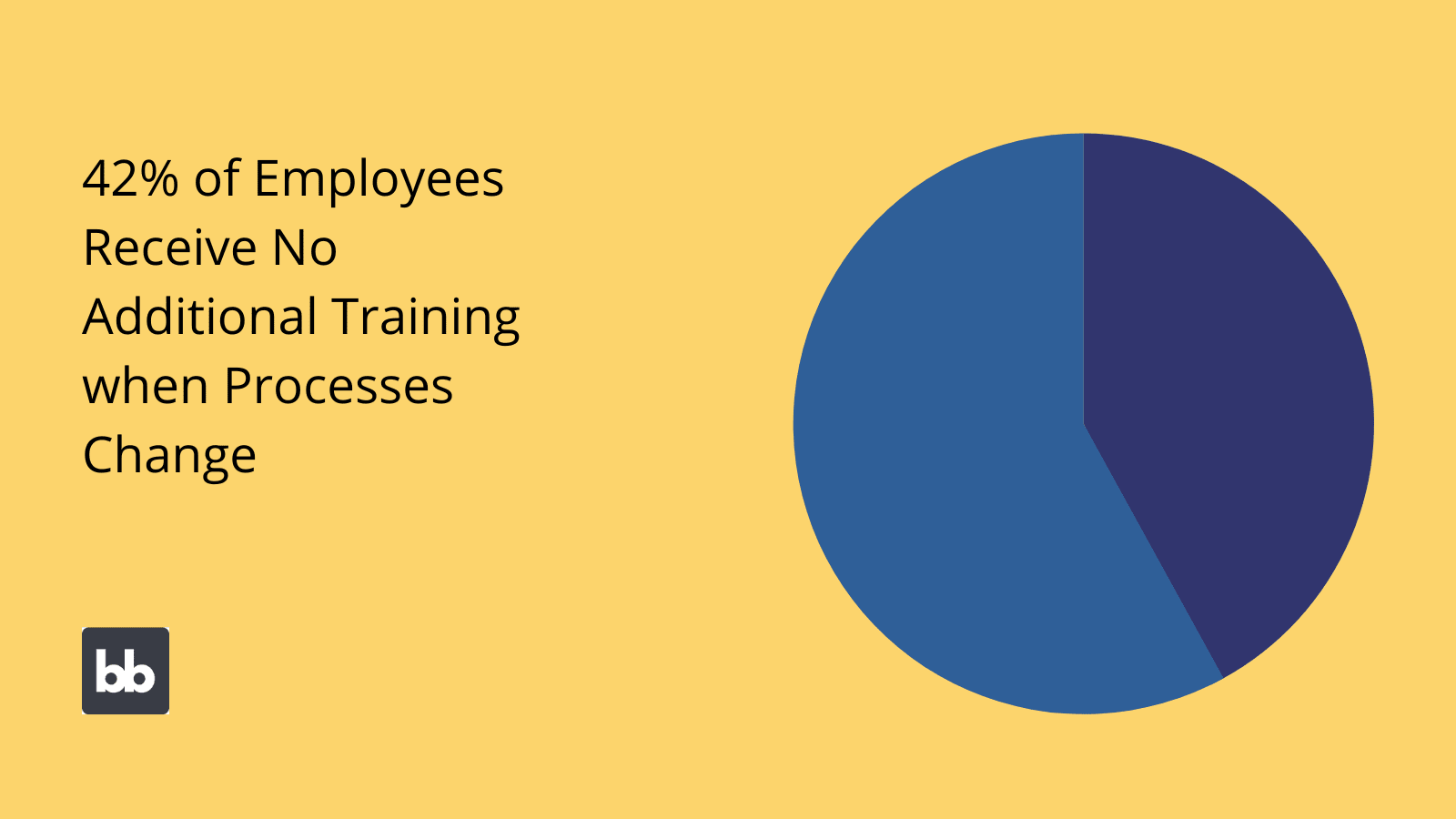
6. Review and follow-on actions
Finally, the work doesn’t stop once you’ve optimized a single process or even all of the processes that you identified as targets. Remember, business process management is supposed to be a seachange in how your organization operates.
Boosting the efficiency is more than likely a drop in the ocean compared to the potential gains of wider transformation.
So, we should treat each transformation effort as a learning opportunity, as well as an end in itself.
Specifically, our goal is to use each completed project as a chance to gather information on what works and what doesn’t in your organization. For instance, by identifying areas where excessive resources were used or real-life results fell short of your expectations.
Who is responsible for business process management?
This is an interesting question. Unfortunately, there isn’t really a straightforward answer. Depending on a whole range of factors, it could be operations teams, project managers, departmental leaders, on-the-ground employees, or some combination of these.
The trouble is, it’s still crucial that there’s a clear delineation of responsibilities. It’s just that how this ought to look is contingent on your individual circumstances.
This becomes even more challenging when we recognize that our decision is likely going to be shaped by competing concerns.
For instance, we might, on the one hand, have a need for a high degree of centralization and control. On the other hand, if our operations team is already overstretched, we’ll have difficulty resourcing this.
In this case, we’ll need to shift the question a little bit and think about who is responsible for specific aspects of business process management.
Delegation becomes critical.
Luckily, BPM, as a discipline, is largely adaptable to this reality.
The reason behind this is that, under each approach to business process management, there’s a distinction drawn between the theoretical model behind how a process is structured and the practical side of implementing this model.
Within this dichotomy, and especially within the latter point, there is further scope for more granular delegation.
So, we could see a cross-disciplinary, collaborative approach.
For instance, you could have an approach where operations colleagues set strategic goals, but IT teams and on-the-ground employees work out the details, before seeking approval from higher-ups.
Building a process management software stack
We’ve hinted at several points so far about the role that technology plays in business process management, without speaking about it in detail.
We said earlier that it’s helpful to think about BPM as being platform-agnostic.
The reason for this is that the focus in the first instance is determining the ideal way for processes to operate in the abstract. Technology is then used to find the most effective way to implement this model.
Of course, we still need to know what our options are. While there are platforms out there that want to bill themselves as one-stop-shop BPM platforms, the reality is that successful transformation often requires a more varied suite of tools.
In this section, we’re going to look at the different classes of software that play a role in BPM, the situations you might need to use each one in, and some of the decision points that you’ll need to consider around specific platforms.
Let’s dive right in.
Process-specific platforms
It makes sense to begin with the kinds of platforms that employees already use within specific processes. Normally, we’re talking about off-the-shelf tools that are built to solve a particular problem.
For example, platforms like your CRM, ERP, email management, ecommerce, inventory management, or other major tools.
There are several important points to note here about why these are so central to your BPM efforts.
By virtue of their centrality in how employees carry out their daily tasks, they have an outsized impact on the exact metrics that BPM deals with. For example, the UX of your core platforms will have a huge impact on employees’ ability to perform tasks efficiently.
Therefore, we can often have a large impact with relative ease, by simply choosing the appropriate tools in the first place.
However, there are a few other considerations to make here.
We’ve seen already that some of the most important levers we have at our disposal surround automation, integration, and interface design. Therefore, it’s vital to thoroughly vet the extent of customization, configuration, and integrability offered by process-specific platforms.
Process mapping and analysis tools
We also have solutions that are built to make the actual work of analyzing, modeling, and reporting on processes easier. We know that BPM is an inherently collaborative process, so our first challenge is ensuring that everyone involved is on the same page.
Therefore, we need the ability to properly document, diagram, and communicate how processes work, as well as how processes are supposed to work.
This requires what are known as business process mapping tools. Essentially, these are dedicated platforms for creating flow-chart diagrams to represent the structure of a process.
The market is pretty saturated with these kinds of platforms at this point.
So how are we supposed to know which ones to choose?
Basically, what you’re looking for is the platform that enables your team to document sufficient detail on each process, in the shortest time possible. Depending on your needs you might also look out for specific functionality around collaboration, sharing, exports, and integrations.
Business intelligence tools
Full-on business intelligence platforms are also invaluable in BPM projects. The ultimate goal of business process management is to do things faster, more profitably, with greater accuracy, or for less.
However, the more granular operationalization, data gathering, and analysis of the factors behind these top-level goals can present more of a challenge than you might think.
The crux of this is that we need a thorough, detailed understanding of how our processes are incurring costs and providing value at present. Naturally, this requires a huge amount of often complex data.
Business intelligence platforms are indispensable here - even though BPM isn’t their primary use case.
The whole point of BI is to make it easier for colleagues to quickly access insights on key business issues, including efficiency, costs, accuracy, and other process-specific metrics.
Therefore, while not essential for BPM as such, this class of tools can often provide a much more streamlined path to choosing the right priorities, goals, and approaches to transforming your processes.
Automation and integration platforms
Then, we can move on to the tools you might use to actually implement changes to your processes. Some of the most prominent examples fall under the umbrella of automation and integration tools.
Unsurprisingly, this is especially true of integration-centric process management.
These are best understood as tools designed to facilitate interactions between existing systems - including passing resources between different platforms.
The market leader here is Zapier .
Essentially, these kinds of platforms enable you to do three things:
- Establish connections between platforms.
- Configure automations based on trigger/action pairs.
- Create rules for processing, transforming, and aggregating data as it is passed between platforms.
The potential use cases here are near-infinite.
However, they’re limited by your existing platforms’ ability to support integrations. They also have less of a role to play in processes or their constituent tasks where user interactions remain necessary.
Low-code platforms
Low-code development is one potential answer to this shortcoming of traditional automation platforms. These platforms combine much of the same functionality as automation tools, plus the ability to build working app interfaces, without the need for custom code.
This represents a complete seachange in the way businesses manage processes.
Often, transformation projects fail, not because they’re poorly planned or technically too complex, but because they require custom development work. Even if the required solutions are relatively simple, this can create a huge resourcing challenge.
The simple reality is that there just aren’t enough skilled developers in the world to meet demand. As a result, there probably aren’t enough developers in your IT team either - so projects go under-resourced - or else they never kick off at all.
Low-code development acknowledges this reality and provides a route through.
At the end of this article, we’ll see how Budibase is leading the pack, by empowering developers and non-specialists alike to build custom solutions, in a fraction of the time, at a fraction of the cost.
How is business process management changing?
First, though, let’s consider some of the other ways that business process management is changing. After all, businesses around the world are adapting to some pretty unprecedented external challenges. It follows that BPM must do the same.
So what exactly are these challenges, and how should process management change to meet them?
With the rise of remote, often internationalized, workforces comes not just a greater impetus for efficient, robust processes, but also new challenges in achieving this - not least of all providing users with the data and resources they need securely.
Besides this, businesses are dealing with a painful new economic reality.
For our purposes, there are two key takeaways from this. On the one hand, there’s a greater-than-ever demand for transformation, especially through digitalization. On the other, it’s never been harder to secure the resources needed to achieve this.
In the face of this, your options are to prioritize the areas that you can transform or find more cost-effective solutions that allow you to do more with less.
Budibase is the latter.
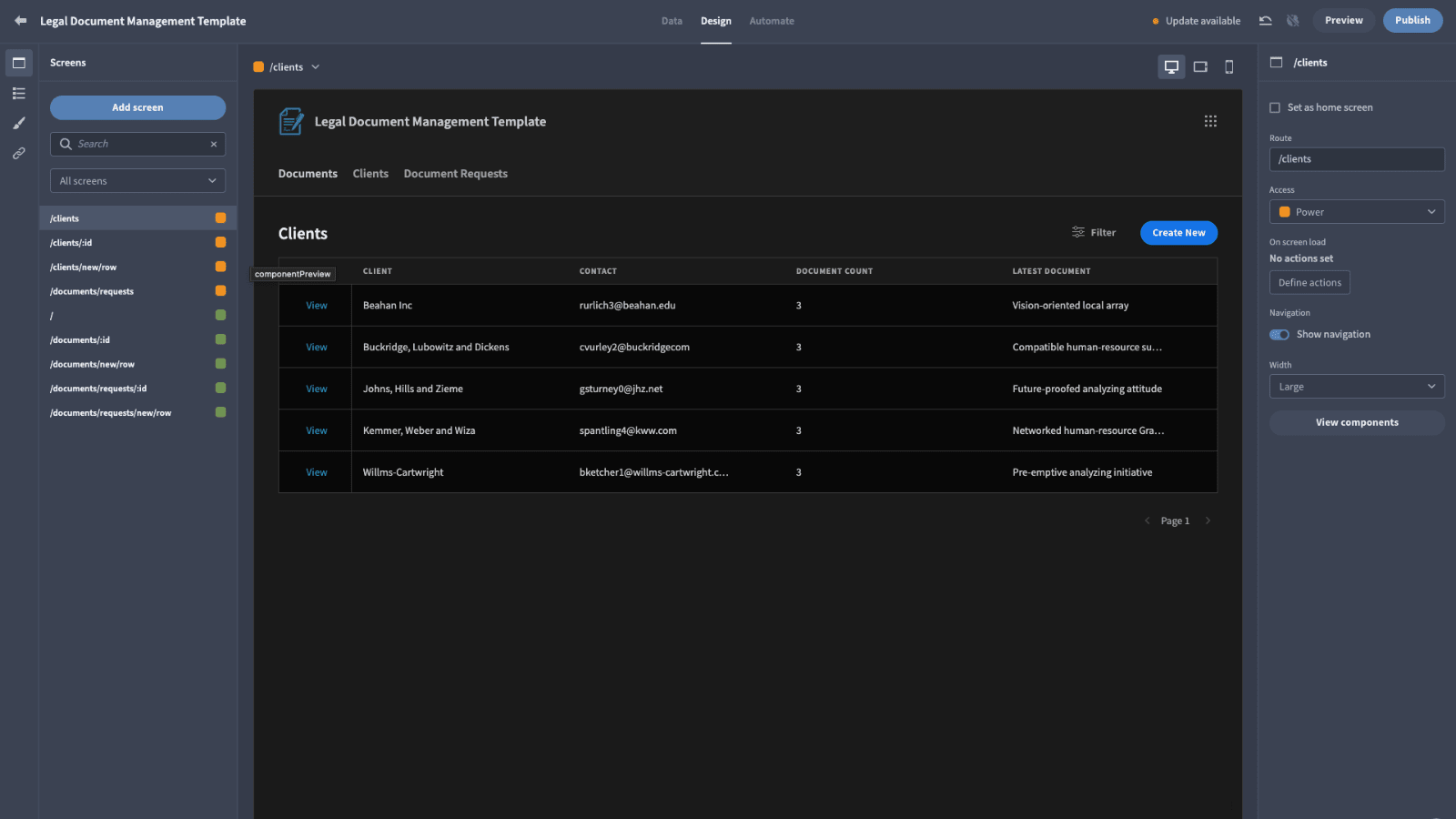
Introducing Budibase
At Budibase, we’re on a mission to transform the way businesses build software solutions. We’ve designed our leading low-code platform to offer best-in-class efficiency, developer experiences, and end functionality.
The result is, frankly, the smart way to build software.
Let’s take a look at what makes Budibase the fast, cost-effective way to transform business processes.
Our low-code platform
Our philosophy is simplicity by design, but extensibility when you need it. Budibase offers unrivaled turnaround times for common use cases and extensive customization for more niche applications.
With autogenerated CRUD screens, extensive data support, optional self-hosting, custom plugin-ins, and more, Budibase is the ideal solution for businesses that need custom tools, fast.
Check out our features overview for more information.
Data support
Budibase leads in the low-code space for external data support. We offer dedicated data connector UIs for SQL, Postgres, S3, Airtable, Mongo, Couch, Oracle, REST, and more. Our platform is perfect for leveraging and managing existing data sources.
Alternatively, use BudibaseDB to create a data model from scratch, in seconds. Our built-in database offers a range of variable types, relationships, CSV uploads, and filtering views.
Process automation
Budibase is your ideal solution for business process management. Our platform features an intuitive, step-based UI for building custom automation rules around in-app actions, database queries, and external integrations.
It’s never been easier to digitalize business logic, with minimal manual coding.
Custom plugins
We’ve just launched custom plug-ins for Budibase. Build your own components and data sources using our CLI tools, and implement them across all of your Budibase applications. No other low-code platform even compares for extensibility.
Check out our plug-ins documentation for more information.
Role-based access control
Use our built-in RBAC system to tailor your application to your specific security and usability needs. Assign roles and grant permissions at the level of data sources, queries, screens, or components, without writing a single line of code.
Check out our in-depth guide on how to implement RBAC to learn more.
Self-hosting & cloud deployments
Enterprises love Budibase for our extensive support for self-hosting. Deploy to your own infrastructure with Docker, Kubernetes, or DigitalOcean for complete control over your Budibase builds.
Or, we also offer our own cloud-based deployment platform. Choose Budibase Cloud to get up and running in seconds, letting us take care of everything.
Check out our pricing page to find out more about both options.
50+ free app templates
We know we’re biased, but we think that Budibase is the perfect solution for building all sorts of business applications to streamline your processes.
But why should you take our word for it?
To show off what our platform is capable of, we’ve created over 50 fully functional, free app templates . Each one is ready to deploy or customize to your heart’s content.
Did we mention that you can also use Budibase to build and deploy custom solutions for free?
To start building software, the fast, easy way, sign up to Budibase today.